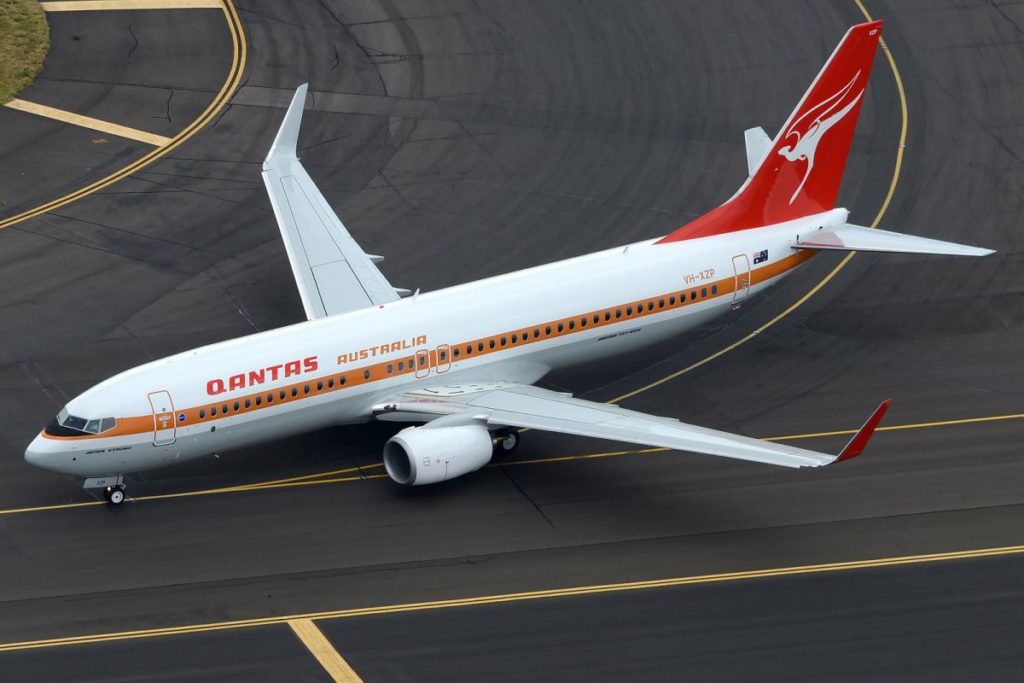Australia’s Qantas is to celebrate its centenary in 2020 and as British Airways have shown recently, painting aircraft in a past livery has proven to be popular.
Things may be a little different down under though, as two aircraft already fly in their main past two jet liveries. However, there is an untapped area, so perhaps this will be what they decide to do.
Current Retro Liveries
Two Boeing 737-838s are painted up in the previous jet era colours of Qantas. The second one to debut actually has the original 1959 scheme introduced with the Boeing 707-138.
Possible Ideas For The Centenary
Historically, Qantas had no domestic network, a bit like Pan American in the United States. The Government owned both the international carrier, Qantas and its domestic counterpart, Australian Airlines. They were merged in the early 1990s.
Overall Thoughts
Australians generally know their aviation, so bringing back the TAA colours for the centenary would bring back a lot of memories. Since they will be flying domestically, it would be appropriate.
Of course, Qantas could go and paint up some of their international aircraft in the older colours too. It’s a shame the Boeing 747-400s are being withdrawn in 2020, as seeing one of those in the original 1971 flying kangaroo colours would be pretty sweet.
What do you think Qantas will do for their centenary? Will they paint some aircraft in retro liveries or not? Any you’d like to see? Thank you for reading and if you have any comments or questions, please leave them below.
To never miss a post, follow me on Facebook, Twitter and Instagram.
All my flight and lounge reviews are indexed here so check them out!
Featured image by clipperarctic via Wikimedia Commons.
Qantas 1959 livery via Qantas
Qantas 1971 livery by Damien Aiello at Jetphotos.net via Wikimedia Commons.
TAA blue livery by David Pryde at airliners.net via Wikimedia Commons.
TAA and Australian Airlines image by RuthAS via Wikimedia Commons.
















Actually the TAA “blue wedge” livery you illustrated in your posting with a B727-76, would look so amazing on a QantasLink/Cobham B717….aka DC-9!!
The later “camel hump” design would similarly be spectacular on a B717 as the DC-9s wore both colour schemes.
Of course I’d be thrilled to see the former TAA liveries adorning Retro jet B737s however the closer connection with the B717/DC-9 airframe would suit these two particular TAA schemes perfectly.
Here’s hoping Qantas surprises us with a few more retro jets this centenary year!
Mike
I agree, it would be pretty awesome to see any of them re-appear on one of the aircraft of today. Cross fingers they decide to surprise us, it would be very nice indeed! Thanks for the comment!
Qantas DID have a domestic network, it was carved off along with some personnel to create TAA in 1946… the Government owned part of Qantas at the time and moved to full ownership in 1947. Qantas was previously a public company. Qantas and TAA were not ‘merged’, Qantas was partially sold to British Airways in 1992 and it purchased Australain Airline from the government for AUD $400M the same year. The whole airline was then floated 100% in 1995 with Australian/TAA operating as a subsidiary of Qantas, although by that time Australian had begun to be re-branded as Qantas. It was labelled a merger but really it was just a take over.
Thank you very much for pointing that out, you are correct, of course. Australian aviation history is certainly very interesting!
That’s not quite true – I mean you’re implying that the TN merger happened after the stake was sold to BA. The merger transaction definitely occurred before the sale of 25% of the combined entity to BA. The TN/QF transaction took place in September 1992, while the BA transaction was in December 1992.
And it wasn’t really a merger. It was really a takeover of QF by TN. By that I mean the combined entity owed more to TN than it did to QF. Which is proper, as by any measure, TN was the bigger operation – employees, fleet, revenue, passengers – the TN numbers were much larger than the QF numbers. Most of the computer systems of the combined entity were TN, not QF. The $400M ‘sale’ figure of TN to QF was just for political expediency.
Correct, as the “merger” was completed before any of the combined entity was sold and floated. Interesting points on the computer systems and so on there, which makes total sense. Thanks for taking the time to point all of that out as it’s always fun to know some new details I hadn’t known before.
Something to where the retro QF and the BA BOAC jets can meet would be fun to see!
That would be pretty cool, but I can’t see it happening though!